Accurate and efficient clinical documentation is the cornerstone of quality care in home healthcare. It ensures effective communication among healthcare providers, supports compliance with regulations, and facilitates data-driven decision-making to improve patient outcomes. In this blog post, we’ll explore best practices for clinical documentation in home healthcare to help your organization enhance care delivery and optimize operations.
Why is Clinical Documentation Important in Home Healthcare?
- Continuity of Care: Clear and concise documentation ensures that all members of the care team are informed about the patient’s condition, treatment plan, and progress, promoting seamless care coordination.
- Compliance and Reimbursement: Accurate documentation is essential for meeting regulatory requirements and ensuring proper reimbursement for home healthcare services.
- Quality Improvement: Documentation provides valuable data that can be used to identify areas for improvement in care delivery and track patient outcomes.
- Legal Protection: In the event of legal disputes or audits, comprehensive documentation serves as a vital record of the care provided.
Best Practices for Clinical Documentation
- Accuracy and Completeness: Ensure that all documentation is accurate, complete, and reflects the patient’s current condition and care needs.
- Timeliness: Document all patient encounters and interventions promptly to maintain an accurate record of care.
- Clarity and Conciseness: Use clear and concise language, avoiding jargon and abbreviations that may not be understood by all members of the care team.
- Objectivity: Document observations and interventions objectively, avoiding personal opinions or subjective interpretations.
- Legibility: Ensure that all documentation is legible and easily understandable. If handwritten, use clear and consistent handwriting.
- Confidentiality: Protect patient confidentiality by following HIPAA guidelines and ensuring that all documentation is stored securely.
- Electronic Health Records (EHRs): Utilize EHRs to streamline documentation processes, improve accuracy, and enhance data management.
Optimizing Documentation with Technology
Technology plays a crucial role in optimizing clinical documentation in home healthcare. EHRs offer numerous benefits, including:
- Reduced paperwork: EHRs eliminate the need for paper-based documentation, reducing clutter and saving time.
- Improved accuracy: EHRs can help reduce errors and improve the completeness of documentation through automated checks and prompts.
- Enhanced communication: EHRs facilitate seamless communication among care team members by providing a centralized platform for accessing patient information.
- Data-driven insights: EHRs can generate reports and analytics that provide valuable insights into patient outcomes and care delivery processes.
Caleb Healthcare Group’s Expertise
Caleb Healthcare Group has extensive experience helping home healthcare organizations optimize their clinical documentation practices. Our team of experts can assist with:
- EHR implementation and optimization: We guide organizations through the process of selecting, implementing, and optimizing EHR systems to meet their specific needs.
- Workflow analysis and redesign: We analyze existing documentation workflows and identify opportunities for improvement to enhance efficiency and reduce administrative burden.
- Training and support: We provide comprehensive training and ongoing support to ensure that staff members are proficient in using EHRs and following best practices for clinical documentation.
Moving Forward
By implementing these best practices and leveraging technology, home healthcare organizations can significantly improve the accuracy, efficiency, and effectiveness of their clinical documentation. This, in turn, will lead to better patient outcomes, enhanced care coordination, and greater operational efficiency.


